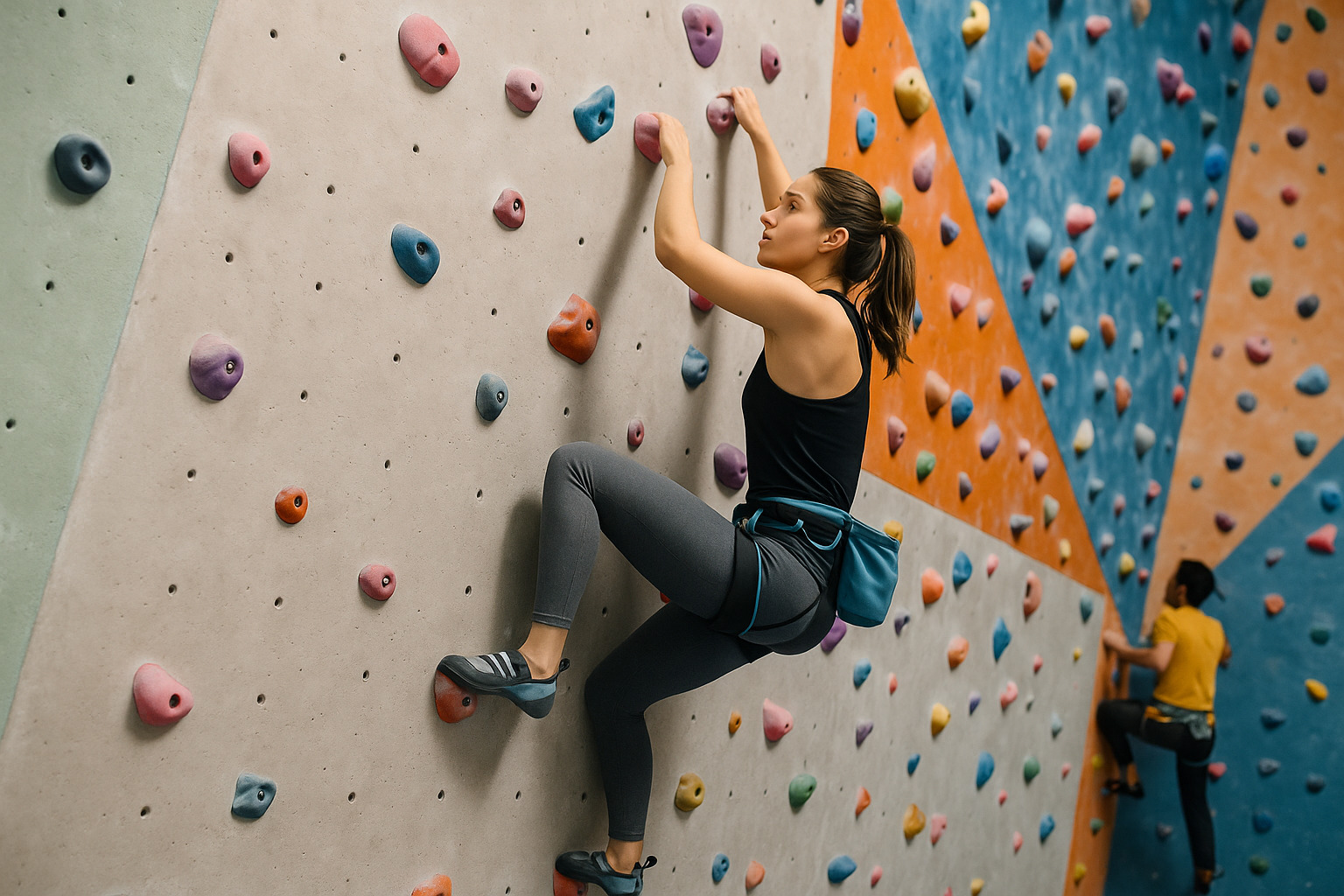Indoor rock climbing has rapidly moved from fringe to fixture. Once reserved for adventurers training for cliffside ascents, climbing gyms are now pulsing with everyday people seeking challenge, movement, and community. Urban centers across the globe are witnessing a steady surge in colorful climbing walls—and they’re not just for the elite. Kids, office workers, retirees, and Olympic hopefuls are all reaching for the same holds.
What’s driving this shift? A mix of cultural momentum, athletic appeal, and accessible design has turned indoor climbing into a mainstream fitness choice.
Urban Climbing Gyms: From Rare to Routine
A decade ago, spotting a climbing gym outside a mountainous town felt novel. That’s changed. In the U.S. alone, the number of climbing gyms jumped from 353 in 2014 to 622 by the end of 2023—an explosive 76% growth. By 2024, North America housed more than 870 such gyms, with a healthy 6.2% increase year-over-year. Globally, the climbing gym market surpassed $3.3 billion in 2024, with steady projections for future expansion.
These gyms aren’t hidden in industrial zones. They’ve entered city blocks, shopping centers, and repurposed warehouses. Location matters, and proximity to where people live and work has turned a niche activity into a lifestyle habit.
The Olympic Effect
Sport climbing’s debut in the Tokyo 2020 Olympics triggered a global spark. For the first time, millions saw athletes sprint up walls, cling to tiny edges, and swing dynamically from hold to hold—all on the world stage.
That exposure translated to action. Google searches for “climbing” hit a five-year high during the games. Gyms reported spikes in memberships and beginner sign-ups. With climbing locked into the Olympic rotation, its visibility won’t fade.
Why People Keep Coming Back
1. Total-Body Physical Engagement
Climbing isn’t about brute strength. It asks for control, flexibility, and coordination. It builds muscle across the entire body—from fingertips to toes—while improving balance, posture, and cardiovascular health.
Calorie burn rivals that of spin classes or circuit training, but the movement feels purposeful. You’re not just lifting weights—you’re scaling a wall with intention.
2. Mental Focus
Each route is a puzzle. Climbers must assess reach, balance, angles, and sequencing. Progression comes from solving those problems on the fly. Unlike repetitive gym routines, climbing keeps the brain as active as the body.
That cognitive component builds resilience and concentration. The mind-body feedback loop is immediate and rewarding.
3. Community Without Pretense
Climbing gyms are known for their social energy. Newcomers often find the atmosphere supportive rather than intimidating. Strangers cheer each other on. Experienced climbers offer beta (tips) without condescension.
Friendships form on mats, not mirrors. The shared effort—whether topping a route or failing gloriously—brings people together.
Accessibility Has Changed the Game
Indoor gyms removed barriers that once kept climbing exclusive. There’s no need for outdoor terrain, permits, or ideal weather. Gyms offer safe, padded environments with auto-belays for solo practice, bouldering areas without harnesses, and walls ranging from child-friendly slabs to overhangs that mimic cliff faces.
Rentals eliminate the need for gear purchases upfront. Staff provide guidance for first-timers. Classes, events, and leagues offer structured paths for progression.
This all contributes to a welcoming entry point. Try it once, and it’s easy to get hooked.
Who’s Climbing Now?
The sport’s demographics are shifting. While climbing has historically skewed white and male, more gyms and organizations are investing in inclusion. Outreach programs, affinity groups, and scholarships are helping diversify participation.
At the same time, young adults and teens are embracing climbing as an alternative to treadmills and weight racks. It’s interactive, physical, and social—without the pressure of competition, unless one seeks it.
Parents are enrolling kids in climbing programs. Couples treat gym sessions like date nights. Retirees are finding gentle routes that maintain flexibility and mobility.
A Glimpse at Why It’s Growing
• Olympic Exposure
Millions watched. Many acted.
• Fitness That Doesn’t Feel Routine
No reps. No sets. Just movement with purpose.
• Instant Community
Climbers spot each other, share tips, celebrate wins, and laugh at fails.
• Mental Engagement
Every route demands focus, adaptability, and problem-solving.
• Urban Convenience
Climbing walls now exist where people actually live.
Final Thoughts
The growth of indoor rock climbing isn’t a fad—it’s a measured response to how people want to move, connect, and grow. The walls may be padded, but the progress feels real. Whether you’re in it for the fitness, the friends, or the fun, the route upward is clear—and more accessible than ever.
